The document provides an overview of a proposed remote vehicle control and tracking system using Controller Area Network (CAN) protocol. The system would allow a vehicle owner to remotely lock or unlock their car and track its location using GPS and GSM technology. CAN is implemented to enable communication between electronic control units in the vehicle for functions like engine management and body controls. The working involves sending location updates via text message when the car starts and allowing the owner to reply to perform remote actions like locking the vehicle.
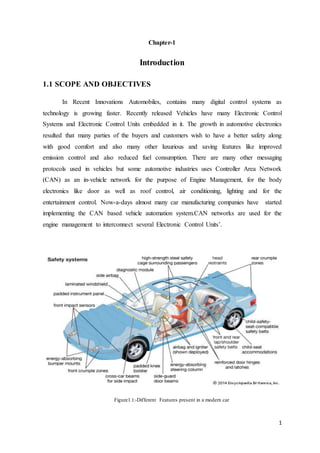



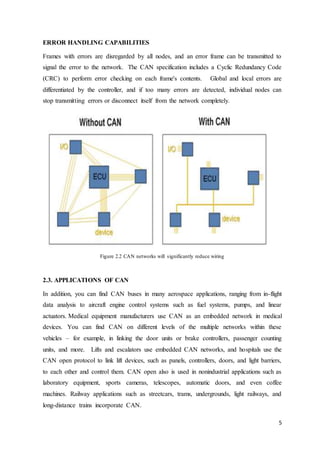
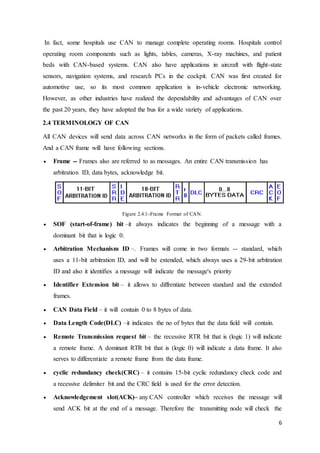


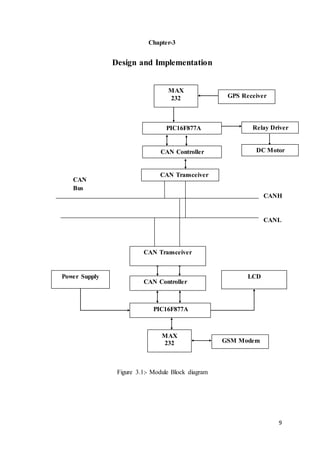
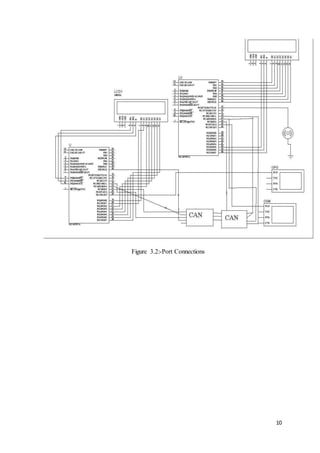
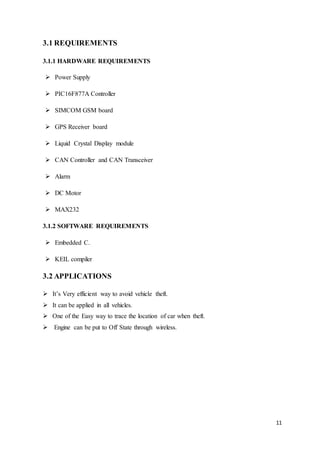









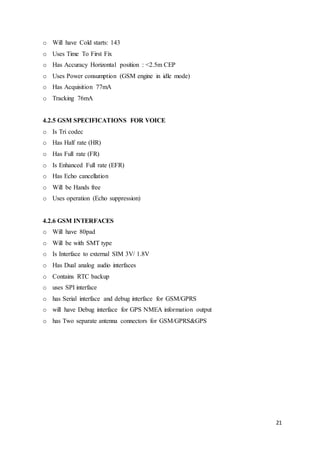




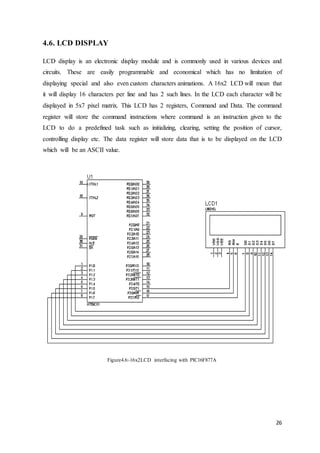








![35
References
[1] A. Saad and U. Weinmann, “Automotive software engineering and concepts,” GI.
Jahrestagung., vol. 34, pp. 318–319, 2003.
[2] E. Nickel, “IBM automotive software foundry,” in Proc. Conf. Comput. Sci. Autom.
Ind., Frankfurt, Germany, 2003.
[3] M. Wolf, A. Weimerskirch, and T. Wollinger, “State of the art: Embedding security in
vehicles,” EURASIP J. Embedded Syst., vol. 2007, no. 5, p. 1,2007.
[4] R. Charette, This Car Runs on Code. [Online]. Available: http://www.
spectrum.ieee.org/feb09/7649
[5] T. Nolte, H. Hansson, and L. L. Bello, “Automotive communications-past, current and
future,” in Proc. IEEE Int. Conf. Emerging Technol. Factory Autom., 2005, vol. 1, pp. 992–
999.
[6] K. H. Johansson, M. Torngren, and L. Nielsen, “Vehicle applications of controller area
network,” in Handbook of Networked and Embedded Control Systems. New York, NY,
USA: Springer-Verlag, 2005, pp. 741–765.
[7] T. Hoppe and J. Dittman, “Sniffing/replay attacks on CAN buses: A simulated attack on
the electric window lift classified using an adapted CERT taxonomy,” in Proc. Conf.
Embedded Syst. Security, 2007, pp. 1–6.
[8] T. Hoppe, S. Kiltz, and J. Dittmann, “Security threats to automotive CAN networks—
Practical examples and selected short-term countermeasures,” Rel. Eng. Syst. Safety, vol.
96, no. 1, pp. 11–25, Jan. 2011.
[9] K. Koscher et al., “Experimental security analysis of a modern automobile,”
in Proc. IEEE Security Privacy. Symp., Oakland, CA, USA, 2010,pp. 447–462.
[10] The EVITA project, 2008, Webpage. [Online]. Available: http://evita-project.org
[11] H. Schweppe, Y. Roudier, B. Weyl, L. Apvrille, and D. Scheuermann, “Car2X
communication: Securing the last meter—A cost-effective approach for ensuring trust in](https://image.slidesharecdn.com/d8e5ccad-28c2-4520-b3b1-4f2173c02cb5-160807064058/85/11-chapters-35-320.jpg)
![36
Car2X applications using in-vehicle symmetric cryptography,” in Proc. Conf. Veh.
Technol., San Francisco, CA, USA, 2011, pp. 1–5.
[12] H. Schweppe et al., “Securing Car2X applications with effective hardware Software
co-design for vehicular on-board networks,” in Proc. Conf. Autom. Security, Berlin,
Germany, 2011.
[13] D. K. Nilsson, U. E. Larson, and E. Jonsson, “Efficient in-vehicle delayed
data authentication based on compound message authentication codes,” in Proc. Conf. IEEE
68th Int. Conf. Veh. Technol., Calgary, BC, Canada, 2008, pp. 1–5.
[14] B. Groza and S. Murvay, “Efficient protocols for secure broadcast in controller area
networks,” IEEE Trans. Ind. Informa., vol. 9, no. 4,pp. 2034–2042, Nov. 2013.](https://image.slidesharecdn.com/d8e5ccad-28c2-4520-b3b1-4f2173c02cb5-160807064058/85/11-chapters-36-320.jpg)